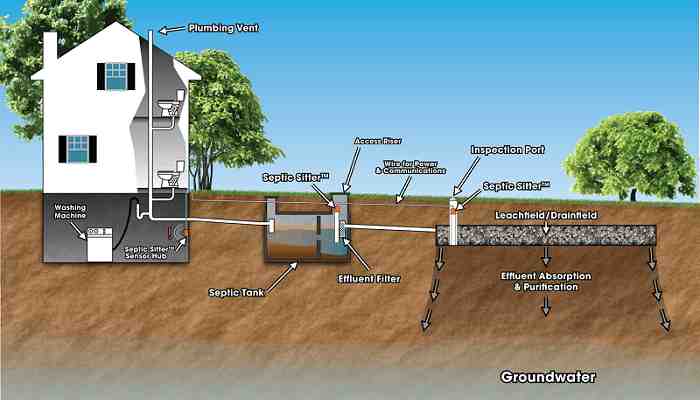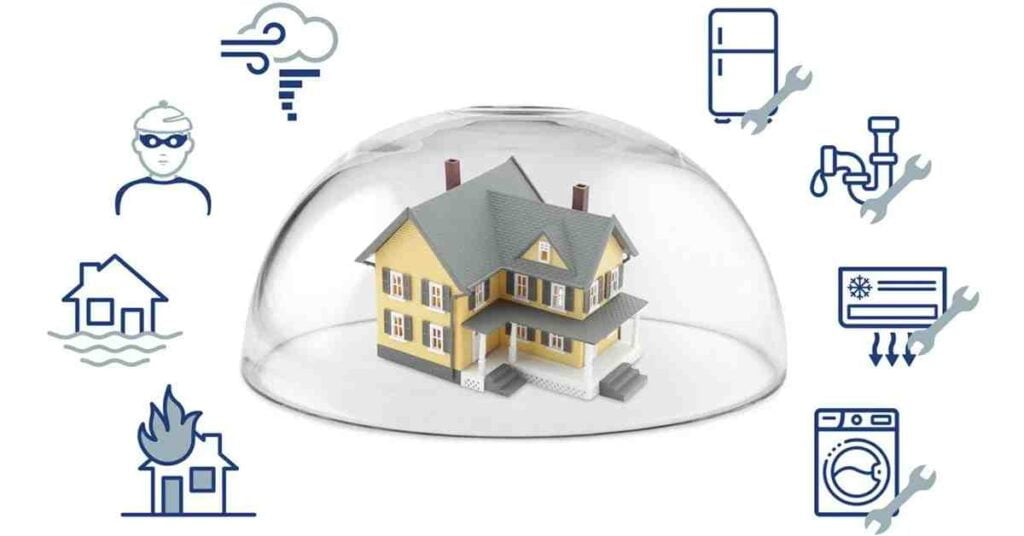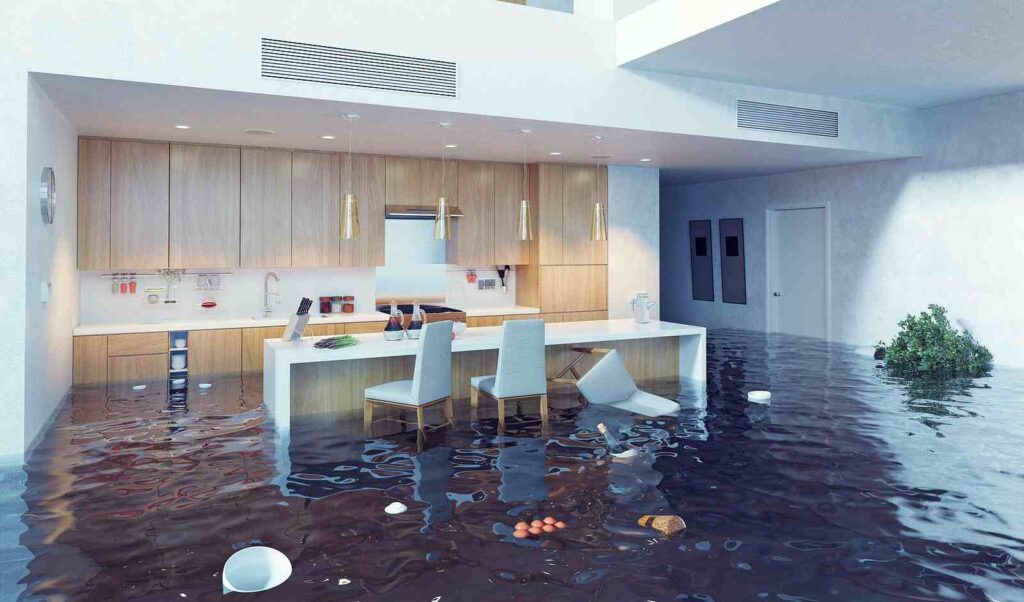Owning a home comes with many responsibilities, and one of them is making sure everything is properly insured. If you have a septic system, you might be wondering if your homeowners insurance covers it. Septic systems are crucial for managing waste, and if something goes wrong, repairs can be expensive. Understanding your insurance coverage can save you a lot of stress and money in the long run. In this article, we’ll explore whether your septic system is covered under homeowners insurance and what you need to know to protect your home and wallet. Let’s dive in!
Understanding Homeowners Insurance

Homeowners insurance is a vital part of protecting your most significant investment—your home. It provides financial coverage for various types of damage and loss that can occur to your property. Here’s a closer look at what homeowners insurance entails:
What is Homeowners Insurance?
Homeowners insurance is a policy that offers financial protection against losses and damages to your home and personal belongings. It also provides liability coverage against accidents in the home or on the property.
Types of Coverage
- Dwelling Coverage: This covers the structure of your home, including the walls, roof, and built-in appliances, against perils like fire, windstorms, and vandalism.
- Personal Property Coverage: This protects your personal belongings, such as furniture, electronics, and clothing, from theft or damage.
- Liability Coverage: This covers legal expenses and damages if someone is injured on your property or if you accidentally cause injury to someone else.
- Additional Living Expenses (ALE): This covers the cost of living elsewhere if your home is uninhabitable due to a covered peril.
Common Perils Covered
- Fire and smoke
- Windstorms and hail
- Lightning strikes
- Theft and vandalism
- Water damage (excluding floods)
Exclusions and Limitations
While homeowners insurance covers many perils, it also has exclusions and limitations. Common exclusions include:
- Flood damage (requires separate flood insurance)
- Earthquake damage (requires separate earthquake insurance)
- Wear and tear or maintenance issues
- Intentional damage
Understanding the basics of homeowners insurance is the first step in ensuring your home and belongings are adequately protected.
Introduction to Septic Systems

A septic system is an on-site wastewater treatment system commonly used in areas without access to municipal sewage systems. Here are its main components and their functions:
1. Septic Tank
- Function: The septic tank is a buried, watertight container typically made of concrete, fiberglass, or polyethylene. It holds wastewater long enough to allow solids to settle down to the bottom (forming sludge) and oils and grease to float to the top (forming scum).
- Process: Wastewater from the house flows into the septic tank, where it separates into three layers: solids (sludge) at the bottom, oils and grease (scum) at the top, and a middle layer of partially clarified water (effluent). Bacteria in the tank break down some of the solids.
2. Drainfield (Leach Field)
- Function: The drainfield is a network of perforated pipes buried in shallow, gravel-filled trenches. It disperses the effluent from the septic tank into the soil.
- Process: The effluent flows from the septic tank into the drainfield, where it percolates through the soil. The soil acts as a natural filter, removing harmful bacteria, viruses, and nutrients before the water reaches the groundwater.
3. Soil
- Function: The soil beneath the drainfield provides the final treatment and disposal of the septic tank effluent.
- Process: As the effluent percolates through the soil, microbes in the soil digest or remove most contaminants from the wastewater before it eventually reaches the groundwater.
Importance of Maintaining a Septic System
Maintaining your septic system is crucial for several reasons:
- Cost Savings: Regular maintenance, including pumping the septic tank every 3-5 years, can prevent costly repairs or replacements. Repairing or replacing a malfunctioning septic system can cost thousands of dollars.
- Property Value: A well-maintained septic system protects your property value. An unusable or malfunctioning system can lower your property value and pose a costly legal liability.
- Health and Safety: Proper maintenance prevents the release of untreated sewage, which contains disease-causing bacteria and viruses. This helps keep you, your family, and your neighbors healthy.
- Environmental Protection: A malfunctioning septic system can contaminate groundwater, which may be a source of drinking water. It can also release harmful pollutants into local waterways, affecting ecosystems and wildlife.
By understanding the components and functions of your septic system and the importance of regular maintenance, you can ensure its longevity and efficiency, protecting both your investment and the environment.
Coverage for Septic Systems
Understanding whether your septic system is covered under homeowners insurance can be a bit complex. Here’s a detailed look at when and how your septic system might be covered:
When is a Septic System Covered?
Homeowners insurance may cover damage to your septic system if it is caused by a sudden, accidental event that is listed as a covered peril in your policy. Common covered perils include:
- Fire: If a fire damages your septic system, your policy may cover the repair or replacement costs.
- Lightning: Damage caused by lightning strikes is typically covered.
- Hail: Hail damage to your septic system may also be covered.
- Snow or Freezing Temperatures: Damage resulting from extreme weather conditions like snow or freezing temperatures might be covered.
- Vehicle Damage: If a vehicle accidentally damages your septic system, it may be covered.
Exclusions and Limitations
While there are scenarios where your septic system is covered, there are also common exclusions and limitations to be aware of:
- Lack of Maintenance: Damage caused by neglect or lack of regular maintenance is typically not covered.
- Wear and Tear: Normal wear and tear or aging of the septic system is usually excluded from coverage.
- Tree Roots: Damage caused by tree roots infiltrating the septic system is often not covered.
- Improper Installation: If the septic system was improperly installed, any resulting damage may not be covered.
What to do If You Can’t Afford Homeowners Insurance?
Understanding the coverage and limitations of your homeowners insurance policy is crucial for protecting your septic system. Always review your policy details and consult with your insurance agent to ensure you have the appropriate coverage for your needs.
Additional Coverage Options
To ensure your septic system is fully protected, you might want to consider additional coverage options beyond your standard homeowners insurance policy. Here are some valuable options to explore:
Water Backup Coverage
Water backup coverage is an optional add-on that provides protection if water backs up into your home due to a clogged drain or sewer line. This can be particularly useful for septic systems, as it covers damage caused by overflow or backup from your septic tank.
Endorsements and Riders
Endorsements and riders are additional provisions that can be added to your homeowners insurance policy to cover specific risks. For septic systems, you might consider:
- Septic System Endorsement: This endorsement specifically covers damage to your septic system that might not be included in your standard policy.
- Equipment Breakdown Coverage: This rider covers the cost of repairing or replacing mechanical equipment, including septic system components, if they break down due to a covered peril.
Flood Insurance
Standard homeowners insurance policies typically do not cover flood damage. If you live in an area prone to flooding, consider purchasing a separate flood insurance policy to protect your septic system and other parts of your property from flood-related damage.
Earthquake Insurance
If you live in an earthquake-prone area, adding earthquake insurance can provide coverage for damage to your septic system caused by seismic activity. This is usually a separate policy or an endorsement to your existing homeowners insurance.
Service Line Coverage
Service line coverage is an optional add-on that covers the cost of repairing or replacing underground service lines, including those connected to your septic system. This can be valuable if your septic system’s pipes are damaged due to wear and tear, tree roots, or other causes.
By considering these additional coverage options, you can enhance your protection and ensure that your septic system is covered in a variety of scenarios. Always review your policy details and consult with your insurance agent to determine the best coverage options for your specific needs.
Preventive Measures and Maintenance
Proper maintenance of your septic system is essential to ensure its longevity and efficiency. Here are some key preventive measures and maintenance tips:
1. Regular Inspections and Pumping
- Inspect Frequently: Have your septic system inspected by a professional at least every three years. Alternative systems with electrical float switches, pumps, or mechanical components should be inspected more often, generally once a year.
- Pump Regularly: The average household septic tank should be pumped every three to five years to remove sludge and scum that can clog the system.
2. Use Water Efficiently
- Conserve Water: Efficient water use can improve the operation of your septic system and reduce the risk of failure. Fix leaky faucets and toilets, install high-efficiency fixtures, and spread out water usage throughout the day.
- Avoid Overloading: Avoid doing multiple loads of laundry or running the dishwasher and washing machine simultaneously. This helps prevent overloading the system.
3. Proper Waste Disposal
- Be Mindful of What You Flush: Only flush human waste and toilet paper. Avoid flushing items like diapers, wipes, feminine hygiene products, and chemicals, as they can clog and damage the system.
- Dispose of Household Waste Properly: Do not pour grease, oils, or hazardous chemicals down the drain. These substances can harm the bacterial balance in the septic tank and cause blockages.
4. Maintain Your Drainfield
- Protect the Drainfield: Keep the area around the drainfield clear of heavy objects, vehicles, and structures. Plant only grass over and near your septic system to prevent roots from damaging the pipes.
- Avoid Excess Water: Direct downspouts and other surface water away from the drainfield to prevent it from becoming waterlogged.
5. Regular Maintenance and Record Keeping
- Keep Records: Maintain records of all inspections, pumping, repairs, and other maintenance activities. This helps track the system’s health and identify any recurring issues.
- Follow a Maintenance Schedule: Stick to a regular maintenance schedule to ensure your septic system remains in good working condition.
By following these preventive measures and maintenance tips, you can help ensure your septic system operates efficiently and lasts for many years. Regular care not only protects your investment but also safeguards your health and the environment.
Filing a Claim

If your septic system is damaged and you need to file a claim with your homeowners insurance, here are the steps to follow:
1. Document the Damage
- Take Photos and Videos: Capture clear images and videos of the damage to your septic system. This visual evidence will be crucial when filing your claim.
- Prevent Further Use: Tape off toilets and sinks to prevent anyone from using them until the issue is resolved.
2. Contact Your Insurance Agent
- Call Your Agent: Reach out to your homeowners insurance agent and inform them that you need to file a claim for septic system damage.
- Provide Details: Be prepared to provide detailed information about the damage, including when and how it occurred.
3. Meet with an Insurance Adjuster
- Schedule an Inspection: Your insurance company will send an adjuster to your home to inspect the damage in person.
- Discuss the Damage: During the inspection, explain the extent of the damage and provide any documentation you have collected.
4. Review the Adjuster’s Report
- Understand the Findings: The adjuster will determine the cause of the damage and whether it is covered under your policy.
- Ask Questions: If you have any questions or concerns about the adjuster’s findings, don’t hesitate to ask for clarification.
5. Follow Up on the Claim
- Stay in Touch: Keep in regular contact with your insurance company to track the progress of your claim.
- Provide Additional Information: If requested, provide any additional information or documentation needed to process your claim.
6. Dispute Resolution
- Hire a Third-Party Adjuster: If your claim is denied or you disagree with the settlement amount, consider hiring a third-party insurance adjuster to review your case.
- File a Complaint: If necessary, file a complaint with your state’s insurance department to seek further resolution.
By following these steps, you can navigate the claims process more effectively and increase the likelihood of a successful outcome. Always review your policy details and consult with your insurance agent to ensure you understand your coverage and the claims process.
FAQs
Q 1. How can I find out if my septic system is covered under my current homeowners insurance policy?
Ans. Review your policy documents or contact your insurance agent to understand the specific coverage details for your septic system. Look for sections related to dwelling coverage and other structures coverage.
Q 2. What should I do if my septic system is not covered by my homeowners insurance?
Ans. Consider purchasing additional coverage options such as water backup coverage or a home warranty plan that includes septic system repairs. You can also explore specialized septic system insurance policies.
Q 3. Are there any signs that indicate my septic system might be failing?
Ans. Common signs of a failing septic system include slow drains, gurgling sounds in the plumbing, sewage odors, wet spots or lush vegetation over the drainfield, and sewage backups in the house.
Q 4. Can tree roots damage my septic system, and is this damage covered by insurance?
Ans. Yes, tree roots can infiltrate and damage septic system pipes. However, damage caused by tree roots is typically not covered by standard homeowners insurance policies.
Q 5. How often should I have my septic system inspected and pumped?
Ans. It is recommended to have your septic system inspected every three years and pumped every three to five years, depending on the size of your household and the septic tank.
Q 6. What maintenance tasks can I perform myself to keep my septic system in good condition?
Ans. Homeowners can conserve water, avoid flushing non-biodegradable items, properly dispose of household chemicals, and regularly check for leaks to help maintain their septic system.
Q 7. Is it possible to upgrade my septic system, and will insurance cover the upgrade?
Ans. Upgrading a septic system is possible, but insurance typically does not cover upgrades. Coverage is usually limited to repairs or replacements due to covered perils.
Q 8. How can I prevent septic system backups during heavy rainfall?
Ans. Ensure proper drainage around your septic system, avoid overloading the system with water during heavy rains, and consider installing a sump pump or backflow preventer
Q 9. What should I do if my septic system backs up into my home?
Ans. Immediately stop using water, contact a septic system professional for emergency service, and notify your insurance company to start the claims process.
Conclusion
Understanding whether your septic system is covered under homeowners insurance is crucial for protecting your home and avoiding unexpected expenses. By exploring the basics of septic systems, the specifics of homeowners insurance coverage, and additional coverage options, you can make informed decisions about your policy.
Regular maintenance and preventive measures are key to ensuring the longevity and efficiency of your septic system. In the event of damage, knowing how to file a claim can help you navigate the process smoothly. Take the time to review your insurance policy and consult with your agent to ensure you have the appropriate coverage for your needs.

Shubham is a passionate insurance expert with years of experience in the industry. I write about home, auto, travel, life, and health insurance to help readers make informed decisions. My goal is to break down the details of coverage, costs, and claims in a straightforward, easy-to-understand way, so you can protect what matters most without the confusion.


